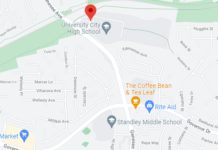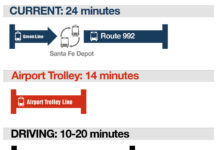Commentary
The Mission Bay Park Master Plan, the City of San Diego’s Program Environmental Impact Report (PEIR), and many citizens are supporting the extension of the Kendall Frost Reserve at the northern edge of Mission Bay. This project would involve turning the existing land that Campland currently leases from the city into wetland at the Rose Creek Delta. The first step was evacuating the De Anza peninsula years ago by permanently removing much needed affordable living and guest residences in San Diego.
The city overdeveloped Mission Bay 70 years ago by eliminating almost all of the wetland. The City Consultants Proposal and PEIR seek to implement the recommendations of the Mission Bay Park Master Plan. The extension of the existing reserve onto Camplands current location allows species from the existing Kendall Frost Reserve to populate the expanded reserve. Both of these proposals would more than triple wetland acreage and relocate Campland, or similar venue, to the De Anza peninsula to the east. See Plan. Campland embraces this idea since it would give them an opportunity to continue leasing land from the City. Camplands relocation would require a major capital outlay.
Along with creating new wetland and relocating Campland the PEIR also includes a: Tennis Center, Athletic Fields, Regional Parkland, and a Golf Course. The city does not anticipate a hotel. Citizens have expressed interest in other, much needed projects in this area. City Planning is trying to put 10 gallons of projects into a 7 gallon vessel. Maybe having dock campsites accessed by boardwalks, above the marshy grasslands, would require less land for guest housing making more available for other uses. It would also help to define the southern limit of the extended reserve and possibly become a platform for mussels and other filter feeders. The dock campsite is the one I would want to stay at since it would be a unique experience, with awesome sunsets. These dock sites could mimic Yosemite partial shelter campsites, that have beds and electricity, but you have to walk a bit to get to a bathroom. Or perhaps a narrow crescent of land remains at the current Campland location and there are dock camp sites that extend out into the extended reserve. Any dock guest venue would be a civilized integration of the manmade and natural environments. It would be a good source of city revenue, provide an iconic image and enhance the appreciation of nature.
On December 6, 2018 most of the plans Audubon’s presented eliminated guest housing completely. This dredges up grievance. If conservationists do not get everything they want they could play the spoiler and run the risk of the city delaying or abandoning the project altogether which would heighten eco-grievance even further. In 2003 dozens of affordable apartments under construction, at La Jolla Village Drive and 805, were burned down by Eco Terrorists, ironically adding carbon to the atmosphere. In a city, civilization offers a bottomless source of grievances for conservationists, who seduce reactionaries into crime. Their threat is ever-present and I have seen threatened government officials give way; resulting in the rejection of something taxpayers wanted.
The California Coastal Commission is unlikely to support any proposal that eliminates a guest housing venue like Campland, which is one of the most popular and affordable vacation venues in San Diego. Hotels are too expensive for many. It is the affordability of Campland, and similar venues, which draws many guests to San Diego. Campland pays the city to lease the site, pays TOT taxes, employs many, and brings customers to other businesses.
Managers believe the next report will be released in early 2019. Environmental Impact Reports are intended to include both the natural and manmade environments (civilization). Conservancy groups often try to hijack the word environmental to mean natural environment only.
Hopefully Audubon will stop presenting solutions that offer no possible relocation for an affordable guest housing venue like Campland. Audubon is a non-profit business with paid staff and expenses. To me fundraising drives their grievance. Audubon, Sierra Club and other San Diego conservancy groups have a record of hypocritical stances; as a lapdog of big money they enthusiastically supported adding several million pounds of carbon dioxide into the atmosphere yearly by eliminating the planned Regents Road Bridge in University. University residents have to drive extended distances to travel within their once planned community, ambulances take longer and not having the bridge also adds unnecessary rush hour traffic, more carbon. The beneficiary was a wealthy foreign owned mall seeking to improve profits. Conservationists and their lobbyists throw gravel in the gears of civilization and then display outrage when the engine begins to smoke.
It remains to be seen if conservancy groups will support the extension of the Kendall Frost Reserve in a manner that acknowledges civilization. The Cities PEIR interpretation acknowledges the Mission Bay Park Master Plan objectives. It is a progressive planning proposal that provides for an affordable guest housing venue like Campland. I hope it is reworked to add more affordable housing.
Louis Rodolico has been a resident of University City since 2001 louisrodolico.com
Links:
PEIR; De Anza Cove Amendment to the Mission Bay Park Master Plan
https://www.sandiego.gov/sites/default/files/00_nop_de_anza_cove_6112018_with_attachments.pdf
Audubon Tax Filing
Audubon Alternative
https://missionbaywetlands.files.wordpress.com/2017/04/rewild-mb-boards-pw4-habitat-boards-small.pdf
University Bridge, Clairemont Times, April 2018 Page 11




